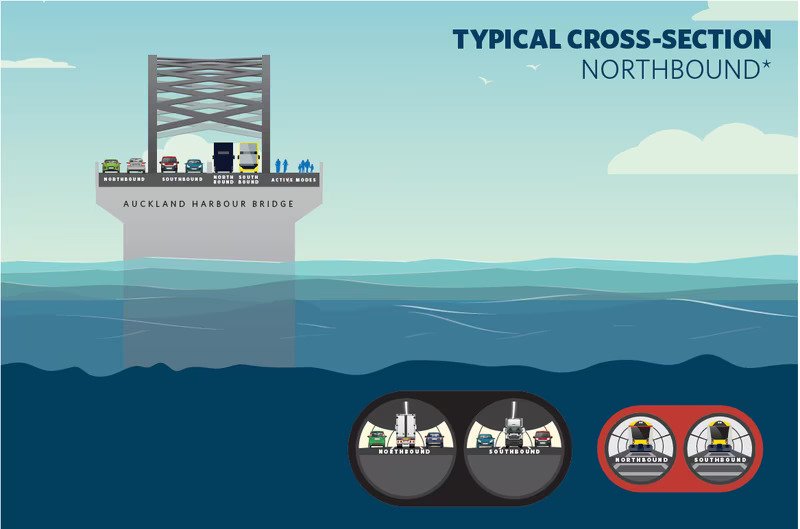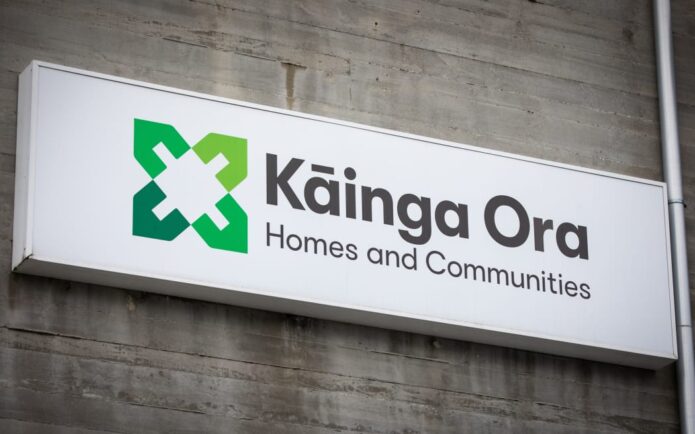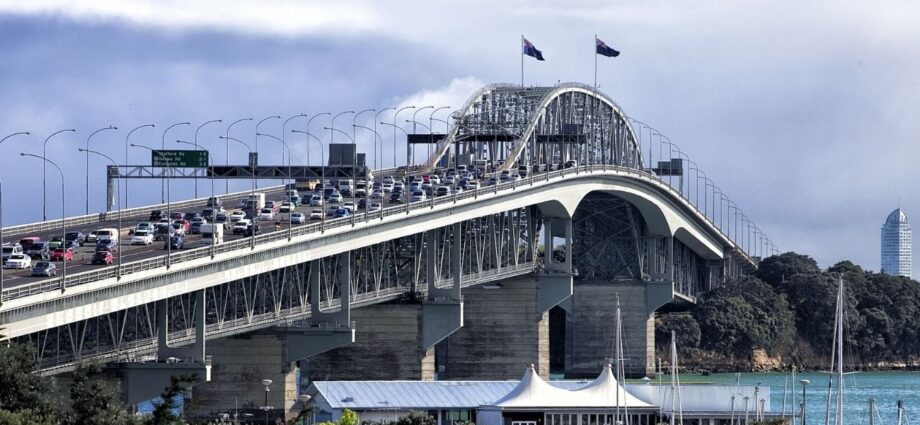PHOTO: Prime Minister Chris Hipkins has announced a “phased” $35-45 billion mega-plan to build a second harbour crossing in Auckland. WSP
Government Unveils Phased $35-45 Billion Mega-Plan for New Auckland Harbour Crossing
Prime Minister Chris Hipkins has announced a “phased” $35-45 billion mega-plan to build a second harbour crossing in Auckland alongside additional transport upgrades for the city’s North Shore.

Emerging preferred option map, released by the Government. (Source: Supplied)
Bold Vision for City Connectivity
Hipkins said the project was a “bold plan” that would “connect all parts of the city” but stressed that all parts of the plan were going to be “staged” or “phased”.
Prioritized Funding for Land Acquisition
Meanwhile, Transport Minister David Parker said funding would be prioritised to secure the land needed for parts of the project.
Construction Targeted by the End of the Decade
“A second harbour crossing is needed as soon as possible, and construction is planned to start by the end of this decade and why we are proposing a phased approach, ensuring additional capacity is achieved after each stage,” Hipkins said.

A cross-section of the four tunnels planned. (Source: Supplied)
Comprehensive Congestion Reduction Approach
“Reducing congestion requires improvements to both roading and public transport, giving the public choice. “Under any phasing option the number of lanes available to cars, public transport, walking and cycling all increase above the status quo.”
Two New Road Tunnels Under the Harbour
$12-15 billion for road tunnels Two new three-lane road tunnels under the Waitematā Harbour, one going in each direction, would cost between $12-15 billion and each be five-to-six kilometres long. For comparison, the twin three-lane Waterview Connection — one of Auckland’s most expensive existing roading tunnels — are each 2.5km long.
Transport Minister David Parker said: “The Waka Kotahi recommended option also includes raising State Highway 1 north of the Harbour Bridge to protect it from flooding caused by storm surges and sea level rise.”
The improvements to SH1 would cost between $1-1.5 billion, according to Parker.
Integrated Transport Solutions
Decisions would be made down the line about whether the harbour crossing road tunnels were built separately or at the same time.
Construction on any new light rail tunnels “would not be expected to begin until after at least the first of the two road tunnels is completed”.
Enhancing Public Transport and Cycling Infrastructure
$500 million to extend busway, build cycle lane The new “twin-tunnel connection” would allow the Northern Busway to be then extended across the bridge on reallocated lanes at a cost of $500 million. The project would create dedicated lanes for buses between Akoranga Bus Station and across the bridge. Buses currently carry nearly half of the people travelling across the bridge at rush hour.
One lane on the Harbour Bridge would also then be re-allocated towards cycling, “with further advice sought on an elevated walking platform above the cycle lanes”.
As a result of the plan, there would be a new cycleway between Constellation Drive in the North Shore, and Westhaven, across the harbour — at a cost of $500 million.
Extensive North Shore Rail System
$21-27 billion for North Shore rail After at least one road tunnel was complete, plans suggest building a new 21km light rail tunnel between Wynyard Quarter to Albany.
The project would cost $8.5-11 billion from the city centre to Smales Farm and between $12.5-16 billion between Smales Farm and Albany.
“This would be a separate project from the road tunnels, and would be built in stages.”
The new train system would not run alongside the existing Northern Busway, and instead create new stations at Belmont, Takapuna, Smales Farm, Glenfield, North Harbour and Albany West.
The new train tunnels are on top of the Government’s existing plans to build a partially tunnelled 24km system between Wynyard Quarter and Auckland Airport — which has been cost estimated at $14 billion. Work to begin within the decade, PM suggests
Staged Implementation for Responsible Management
Hipkins emphasised that the project would be staged and phased.
“A project such as this must be delivered in stages, like the Waikato Expressway was, so that the cost and roll-out of each element can be managed carefully and responsibly.
“The Government has asked Waka Kotahi NZTA to accelerate work on essential first steps towards realising a transport plan of this scale.
“These new tunnels future-proof the city’s transport network by reducing reliance on the Harbour Bridge while creating fast new options for getting in and out of the city.”
Ensuring Certainty for the Future
Meanwhile, Transport Minister David Parker suggested the new plan would provide “certainty” going into the future, and that funding would be prioritised to deliver on it.
“In my opinion, one of the problems in Auckland transport planning has been too much uncertainty. All harbour crossing options land in the same area south of the bridge, near to Victoria Park. This is the anchor point for everything,” he said. Much of the land is already owned by the Crown. Securing the remaining land is important for all future options. The draft Government Policy Statement of Transport to be released in the coming weeks will prioritise and fund this.
“Waka Kotahi will also report back to Cabinet next year with a detailed plan for how the elements of the cross-harbour plans can be phased and funded.
Parker added that the Government was “seeking advice” from NZTA on how to fund “a project of this scale. We will need to keep an open mind to funding options”.













